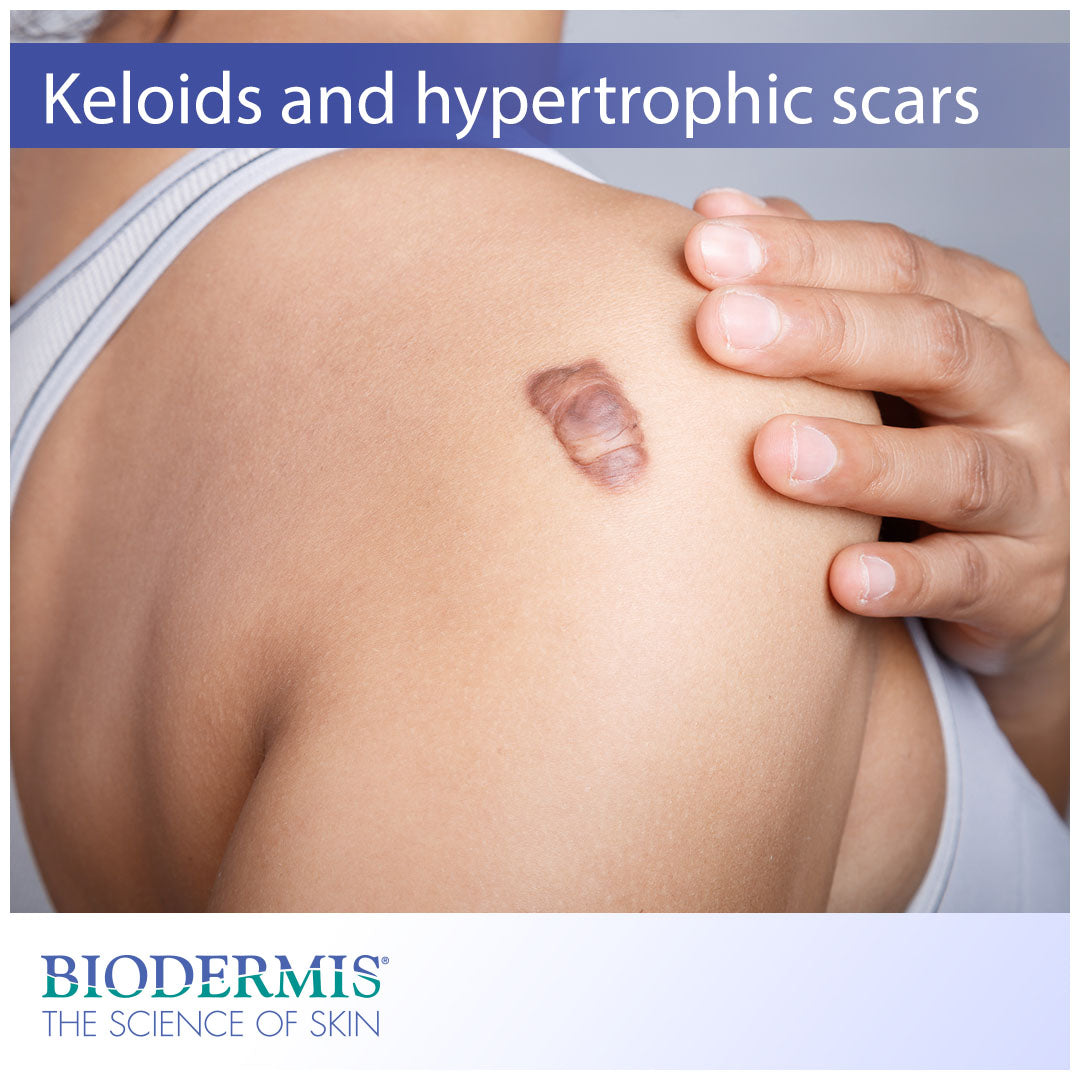Scars come in all different shapes, sizes, and complexions. And the way they form largely depends on the individual and his or her skin type. Because different people have different skin types, the way scars form as part of the wound healing process can vary. Scars form in response to wounds attained from cuts, burns, piercings, tattoos, acne and surgical procedures. It’s difficult to predict what a person’s scar will look like even if we know the kind of wound she sustained. Two classifications of scars—keloid and hypertrophic—are common forms of scarring that can be unsightly, itchy, and even painful.
Continue reading to learn all about these two scar types and what you can do to prevent them or reduce their appearance.
Keloid scars
Keloid scars are cutaneous conditions resulting from scar tissue overgrowth. When a person sustains a wound that penetrates the dermis, or middle layer of the skin, fibroblasts and keratinocytes respond by synthesizing massive amounts of collagen. Collagen , a common structural protein, is then sent to the open wound, promoting the growth factor and skin contraction. Old skin tissue is replaced with new tissue, and we are left with a scar.
Keloid scars are characterized by their lumpy or ridged appearance. Often, these scars will branch out past the size of the initial wound area, leaving the affected person with a burdensome growth on their skin. Keloids are considered benign tumors, but they rarely metastasize and become cancerous. The color of keloids may vary from red to purple, making them stand out from the surrounding tissue.
Not everyone who sustains a wound will develop a keloid scar. People with darker skin tones are more at risk for developing them, but any population is susceptible. In rare cases, a person can develop a keloid even in the absence of an injury. This is a rare condition known as a “spontaneous keloid.” In other cases, keloids can develop from a surgical incision despite the surgeon's expertise.
Apart from being cosmetically unappealing, keloid scars can be burdensome in other aspects of life. Because scar tissue contains no hair follicles or sweat glands, keloid scars can become itchy and painful. If a keloid is large enough, simple, everyday movements and daily tasks can be uncomfortable. Contact your dermatologist immediately if these symptoms worsen.
Hypertrophic scars
Hypertrophic scars are cutaneous conditions typically less severe than their keloid counterparts but still burdensome. Hypertrophic scars form as a result of collagen overproduction and skin contraction, much like keloids. Hypertrophic scars don’t discriminate, as they are more common than keloids and affect all populations equally. If you have sensitive skin and are predisposed to abnormal scarring, you will likely develop a hypertrophic scar at some point in your life.
Hypertrophic scars are characterized by their raised, bumpy texture and discolored tone. These scars can be pink, red, or purple in color, making them distinguishable from surrounding skin tissue. Unlike keloids, hypertrophic scar tissue does not expand beyond the margins of the initial wound site. Nonetheless, these scars can be itchy and painful due to the lack of sweat glands and hair follicles in the regrown tissue.
It’s likely genetics play a role in hypertrophic and keloid scar formation, so there isn’t much an individual can do to prevent them on her own. Luckily, with the help of modern technology and creative ingenuity, an effective topical solution for scar management is widely available and easily attainable.
Silicone gel sheeting for scar management
Silicone gel technology is a preeminent medical advancement in scar therapy that has achieved much success since its development over 30 years ago. As an alternative to surgery and cortisol steroid injections, medical-grade silicone is an effective topical method for the prevention and reduction of keloid and hypertrophic scarring.
Biodermis is responsible for popularizing silicone gel technology nearly 30 years ago by providing quality products and excellent service to dermatologists and plastic surgeons around the world. Epi-Derm Silicone Gel Sheets engineered by Biodermis come in many shapes, colors, and sizes, making them the perfect solution for both large and small scars. Pro-Sil Silicone Scar Sticks patented by Biodermis are the perfect solution for acne and facial scars and come in an easy-to-use glide on applicator.
Biodermis is an innovative market leader with 30 years of expertise in the medical silicone industry. Visit Biodermis.com today to explore a complete range of scar management and post-operative care solutions.
PHYSICIANS AND MEDICAL PROFESSIONALS: REFER OR RESELL?
Biodermis offers custom tailored referral programs designed to simplify and reduce the cost of your patients' post-op care. Additionally, we offer professional pricing if you opt to retail our products. Give us a call at 800.322.3729, and we will be happy to provide additional details on these programs.






